Abstract
Equimolar concentrations of cysteamine and reduced glutathione protected against the cytotoxicity of 5 mM misonidazole (MISO), whereas 5mM ascorbate enhanced its toxicity to hypoxic CHO and HeLa cells in vitro. Protection (reappearance of a shoulder region) could also be seen when cysteamine was added at later incubation times. These changes in toxicity were accompanied by changes in drug metabolism, as evidenced by radiochromatograms of cell extracts obtained after treatment with 14C-labelled MISO. In contrast, radiochromatograms obtained from cells treated with toxic levels of MISO (75 mM) under aerobic conditions indicated no drug metabolism. Both toxicity and drug metabolism could be immediately halted by introducing O2 during hypoxic exposure to MISO. These observations are discussed in terms of a possible model for the metabolism-mediated toxicity of MISO and the roles which sulphydryls and O2 may play.
Full text
PDF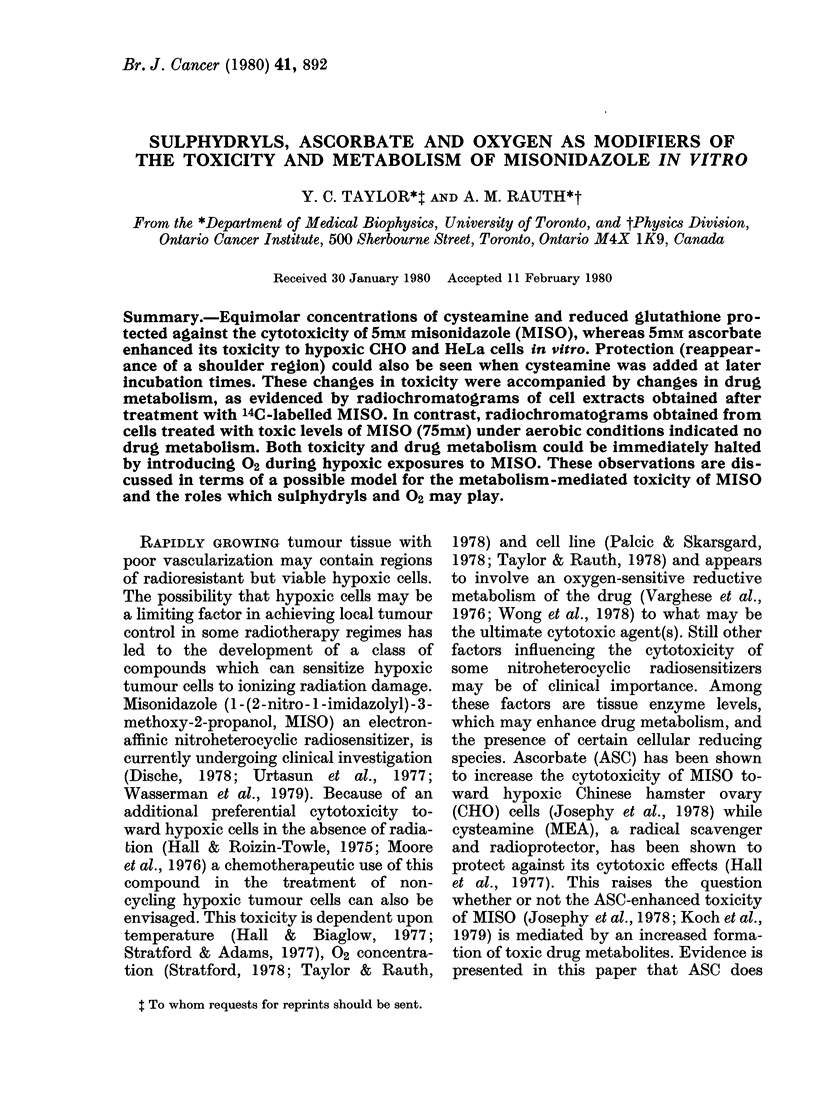
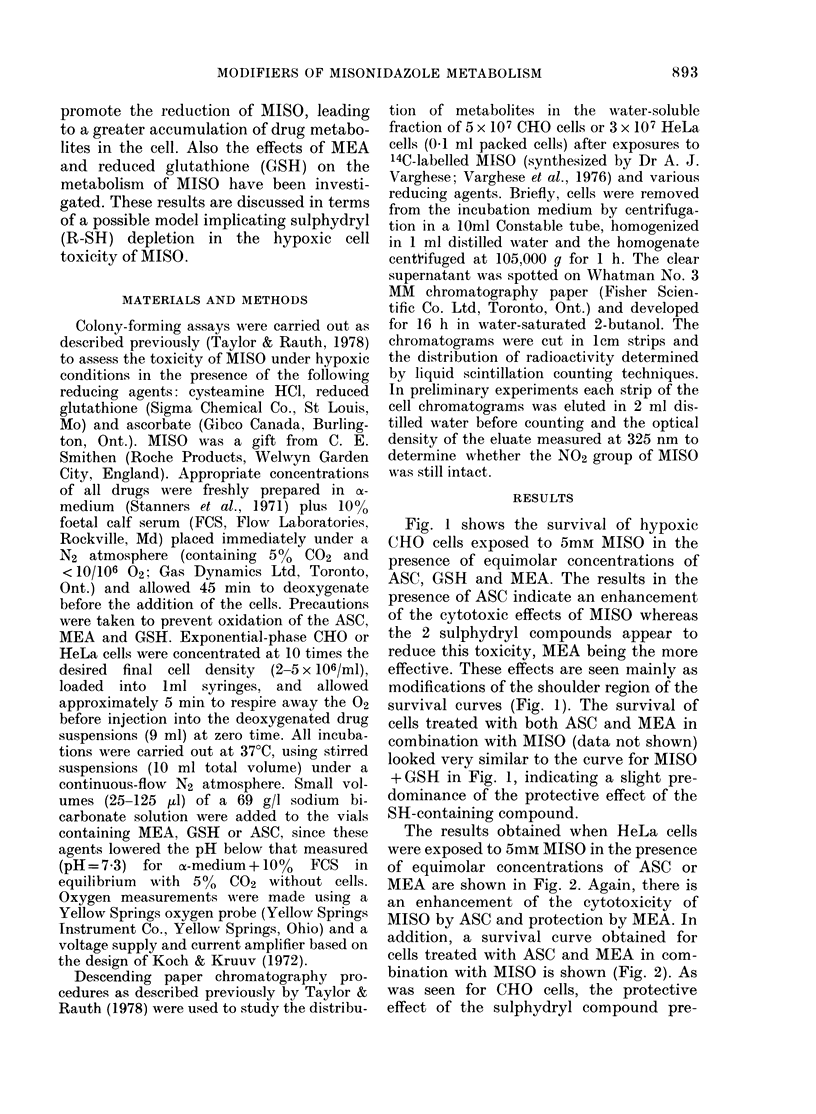

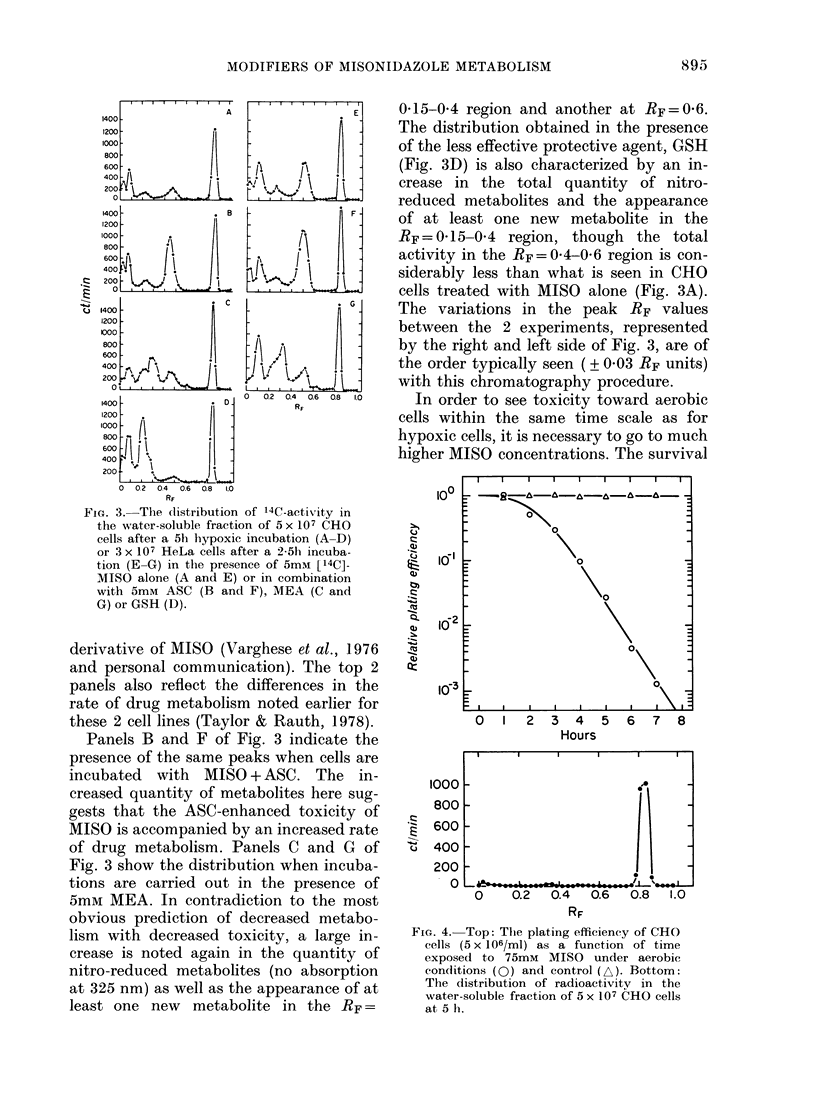
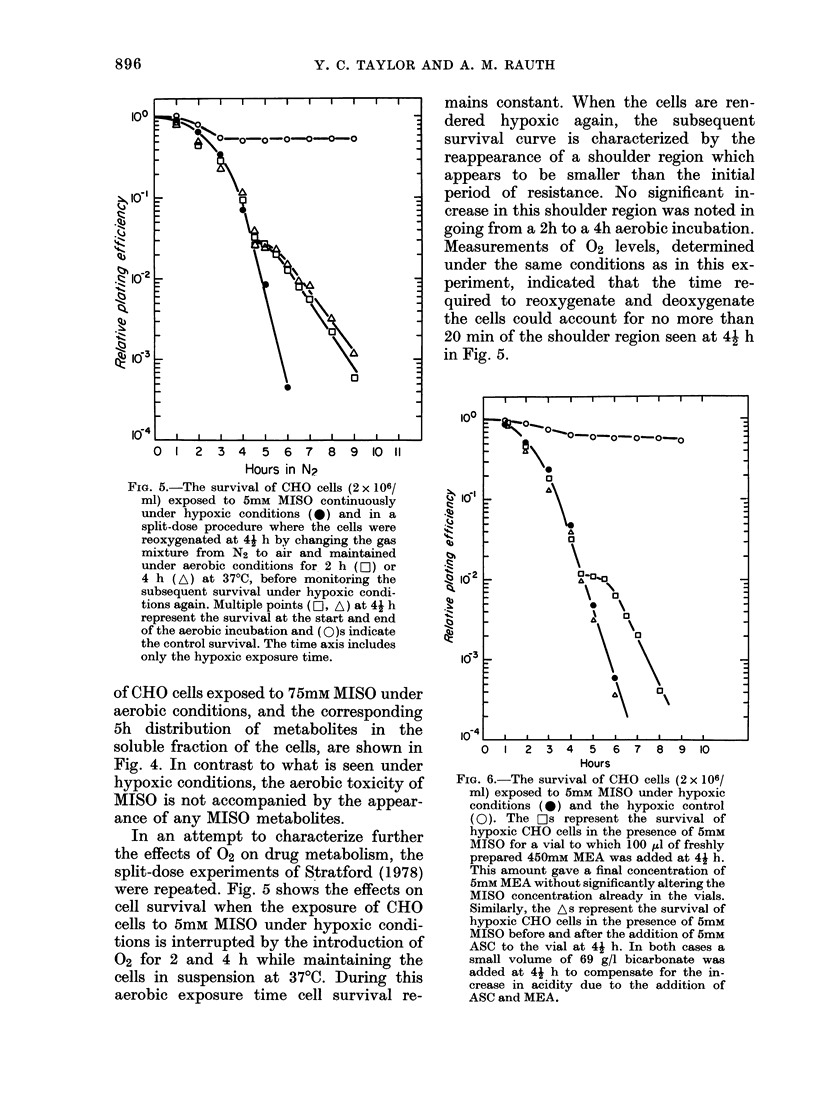


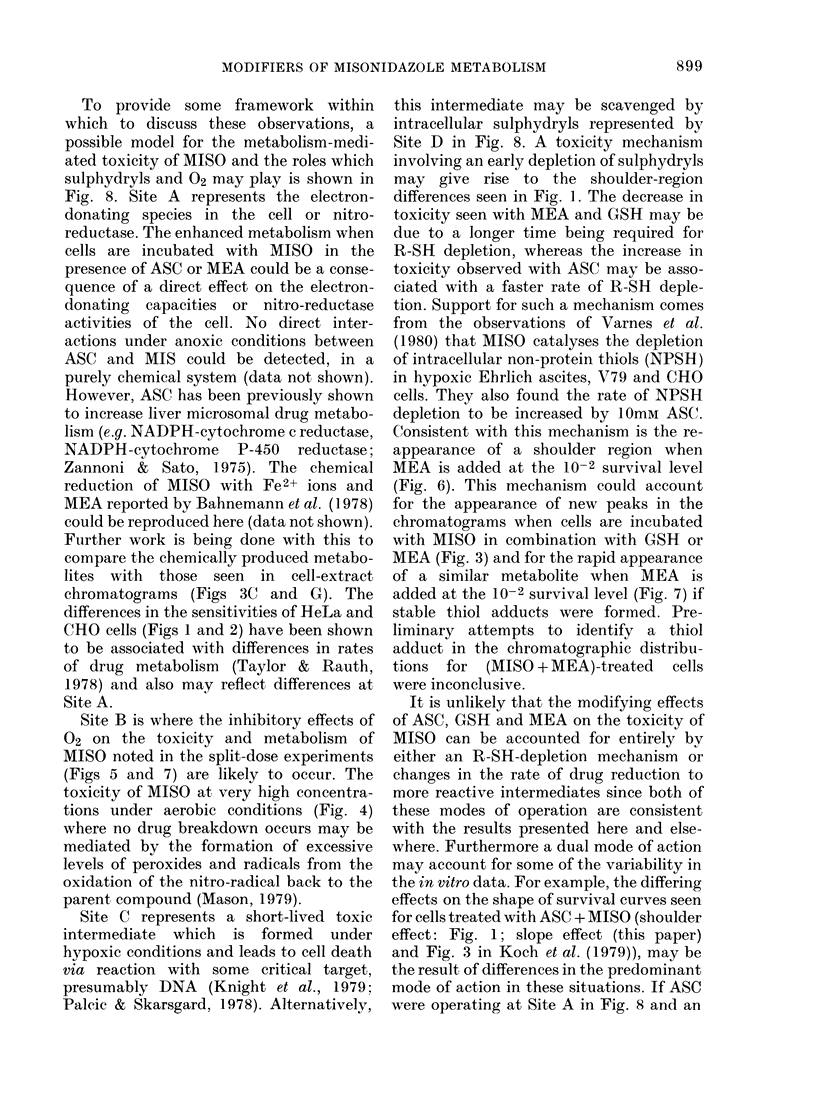
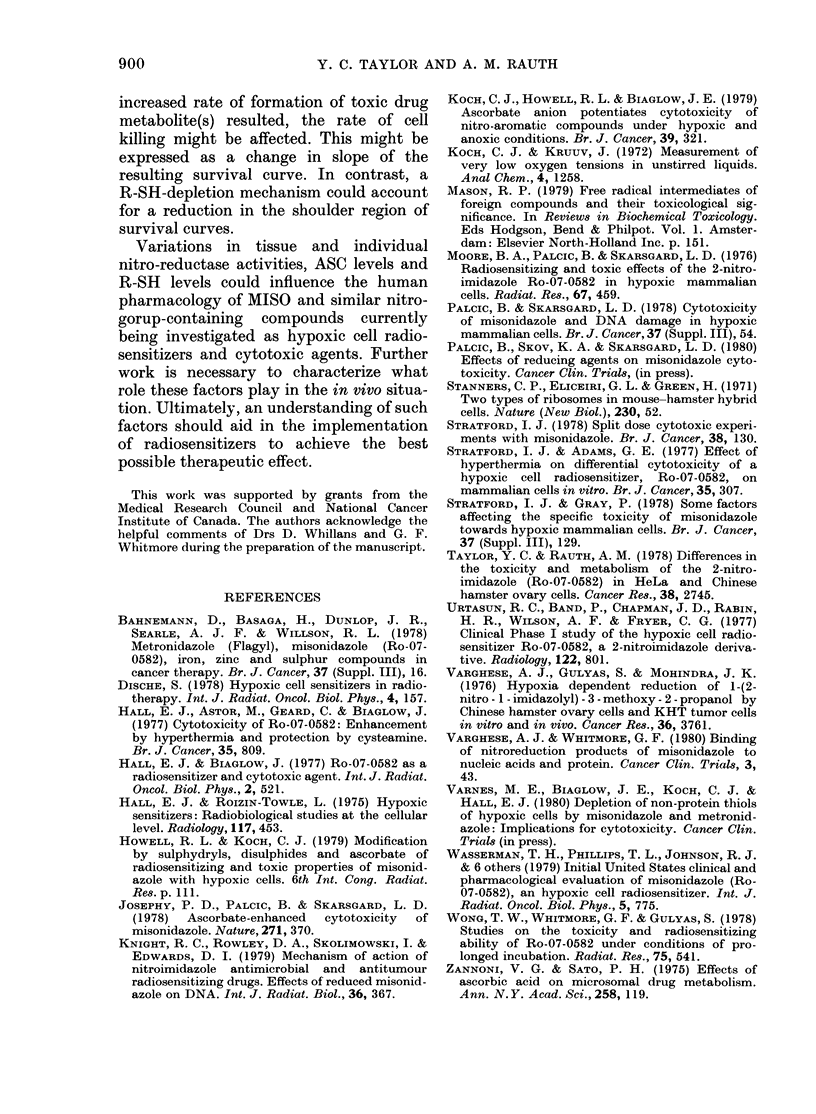
Selected References
These references are in PubMed. This may not be the complete list of references from this article.
- Bahnemann D., Basaga H., Dunlop J. R., Searle A. J., Willson R. L. Metronidazole (Flagyl), misonidazole (Ro 07-0582), iron, zinc and sulphur compounds in cancer therapy. Br J Cancer Suppl. 1978 Jun;3:16–19. [PMC free article] [PubMed] [Google Scholar]
- Dische S. Hypoxic cell sensitisers in radiotherapy. Int J Radiat Oncol Biol Phys. 1978 Jan-Feb;4(1-2):157–160. doi: 10.1016/0360-3016(78)90132-3. [DOI] [PubMed] [Google Scholar]
- Hall E. J., Astor M., Geard C., Biaglow J. Cytotoxicity of Ro-07-0582; enhancement by hyperthermia and protection by cysteamine. Br J Cancer. 1977 Jun;35(6):809–815. doi: 10.1038/bjc.1977.122. [DOI] [PMC free article] [PubMed] [Google Scholar]
- Hall E. J., Biaglow J. Ro-07-0582 as a radiosensitizer and cytotoxic agent. Int J Radiat Oncol Biol Phys. 1977 May-Jun;2(5-6):521–530. doi: 10.1016/0360-3016(77)90163-8. [DOI] [PubMed] [Google Scholar]
- Hall E. J., Roizin-Towle L. Hypoxic sensitizers: radiobiological studies at the cellular level. Radiology. 1975 Nov;117(2):453–457. doi: 10.1148/117.2.453. [DOI] [PubMed] [Google Scholar]
- Josephy P. D., Palcic B., Skarsgard L. D. Ascorbate-enhanced cytotoxicity of misonidazole. Nature. 1978 Jan 26;271(5643):370–372. doi: 10.1038/271370a0. [DOI] [PubMed] [Google Scholar]
- Knight R. C., Rowley D. A., Skolimowski I., Edwards D. I. Mechanism of action of nitroimidazole antimicrobial and antitumour radiosensitizing drugs. Effects of reduced misonidazole on DNA. Int J Radiat Biol Relat Stud Phys Chem Med. 1979 Oct;36(4):367–377. doi: 10.1080/09553007914551151. [DOI] [PubMed] [Google Scholar]
- Koch C. J., Howell R. L., Biaglow J. E. Ascorbate anion potentiates cytotoxicity of nitro-aromatic compounds under hypoxic and anoxic conditions. Br J Cancer. 1979 Mar;39(3):321–329. doi: 10.1038/bjc.1979.56. [DOI] [PMC free article] [PubMed] [Google Scholar]
- Moore B. A., Palcic B., Skarsgard L. D. Radiosensitizing and toxic effects on the 2-nitroimidazole Ro-07-0582 in hypoxic mammation cells. Radiat Res. 1976 Sep;67(3):459–473. [PubMed] [Google Scholar]
- Palcic B., Skarsgard L. D. Cytotoxicity of misonidazole and DNA damage in hypoxic mammalian cells. Br J Cancer Suppl. 1978 Jun;3:54–59. [PMC free article] [PubMed] [Google Scholar]
- Stratford I. J., Adams G. E. Effect of hyperthermia on differential cytotoxicity of a hypoxic cell radiosensitizer, Ro-07-0582, on mammalian cells in vitro. Br J Cancer. 1977 Mar;35(3):307–313. doi: 10.1038/bjc.1977.44. [DOI] [PMC free article] [PubMed] [Google Scholar]
- Stratford I. J., Gray P. Some factors affecting the specific toxicity of misonidazole towards hypoxic mammalian cells. Br J Cancer Suppl. 1978 Jun;3:129–131. [PMC free article] [PubMed] [Google Scholar]
- Stratford I. J. Split dose cytotoxic experiments with misonidazole. Br J Cancer. 1978 Jul;38(1):130–136. doi: 10.1038/bjc.1978.172. [DOI] [PMC free article] [PubMed] [Google Scholar]
- Taylor Y. C., Rauth A. M. Differences in the toxicity and metabolism of the 2-nitroimidazole misonidazole (Ro-07-0582) in HeLa and Chinese hamster ovary cells. Cancer Res. 1978 Sep;38(9):2745–2752. [PubMed] [Google Scholar]
- Urtasun R. C., Band P., Chapman J. D., Rabin H. R., Wilson A. F., Fryer C. G. Clinical phase I study of the hypoxic cell radiosensitizer RO-07-0582, a 2-nitroimidazole derivative. Radiology. 1977 Mar;122(3):801–804. doi: 10.1148/122.3.801. [DOI] [PubMed] [Google Scholar]
- Varghese A. J., Gulyas S., Mohindra J. K. Hypoxia-dependent reduction of 1-(2-nitro-1-imidazolyl)-3-methoxy-2-propanol by Chinese hamster ovary cells and KHT tumor cells in vitro and in vivo. Cancer Res. 1976 Oct;36(10):3761–3765. [PubMed] [Google Scholar]
- Varghese A. J., Whitmore G. F. Binding of nitroreduction products of misonidazole to nucleic acids and protein. Cancer Clin Trials. 1980 Spring;3(1):43–46. [PubMed] [Google Scholar]
- Wasserman T. H., Phillips T. L., Johnson R. J., Gomer C. J., Lawrence G. A., Sadee W., Marques R. A., Levin V. A., VanRaalte G. Initial United States clinical and pharmacologic evaluation of misonidazole (Ro-07-0582), an hypoxic cell radiosensitizer. Int J Radiat Oncol Biol Phys. 1979 Jun;5(6):775–786. doi: 10.1016/0360-3016(79)90061-0. [DOI] [PubMed] [Google Scholar]
- Wong T. W., Whitmore G. F., Gulyas S. Studies on the toxicity and radiosensitizing ability of misonidazole under conditions of prolonged incubation. Radiat Res. 1978 Sep;75(3):541–555. [PubMed] [Google Scholar]
- Zannoni V. G., Sato P. H. Interaction with drugs and environmental chemicals. Effects of ascorbic acid on microsomal drug metabolism. Ann N Y Acad Sci. 1975 Sep 30;258:119–131. doi: 10.1111/j.1749-6632.1975.tb29272.x. [DOI] [PubMed] [Google Scholar]


